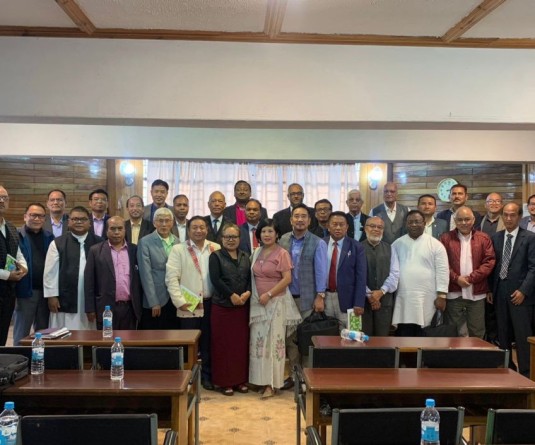
Kaka D Iralu
The last week of Oct. 2019 was a frenzied period of apprehension, fear and uncertainties where even the most silent Nagas began to express their opinions with both fear and hopes. But suddenly with the end of October 31, the dark clouds were all seemingly swept away and were replaced by CONGATULATORY STATEMENTS going back and forth.
Does this mean that a solution to the Indo Naga conflict has finally been achieved and every Naga can now peacefully go back to accumulating wealth and pursuing personal happiness sans intimidations, extortions and even the threat of death from the AFSPA? I for one do not believe that such a utopia is just round the corner for all Naga citizens to enjoy in blissful abandonment. At the highest level of solution, even if India agrees to withdraw from our lands and go back to India, Manipur, Assam and Arunachal cannot follow India back to the Gangetic plains of Inda. We shall therefore still be left with the problems of the boundary dissections of our lands into these three neighbouring states without our consents. For example, Manipuris will have to show us exactly on what grounds of historical and political facts, they are now claiming that the hill sections of the present day Indian Manipur state now belongs to the Meitei people. After all, the hill sections of the Manipur state have always been inhabited by the Nagas from time immemorial.
Also, every historian knows that after the treaty of Yendabo in 1826, Manipur and Assam became British protectorates along with the Arakan and Tenasserim regions. We also know that the Manipur kingdom remained a sovereign kingdom often assisted by the British in her wars against Burmese incursions until it rebelled against the British in 1891 and were defeated by them. We also know that Britain had never accepted the Manipur kingdom as a sovereign equal but as a subordinate native state. In keeping with this attitude, the Manipur Durbar was a British Durbar where British dictates were imposed and the Manipur kings had to accept all those dictates. As for taxation of its subjects in the plain areas (Manipur plains areas) and the independent Naga Hill Areas, two separate taxes were imposed as Rs 5 in the plains and Rs 3 in the hills. Administration of the hill areas was also different from those of the plain areas. On the basis of these facts and many other facts of migration and earlier settlements in the hill areas, Manipuris of today can never claim that the Hill areas inhabited by the independent Naga tribes had always formed an integrated Manipur Kingdom under the British or even under present India.
As for Assam, from historical records it is clear that we Nagas already inhabited our lands and even some plains of Assam from A.D. 150 or even in the late B.C. eras. But as for the Ahoms, they came and settled down in the proper plains of Assam only after 1228 A.D. Their king Sukappa had many fierce encounters with us Nagas when they crossed our Patkai ranges on their way to Assam. Intermittent warfare continued for many years until boundary stones were erected which are still standing even today. As for our lands in Arunachal Pradesh, they did not fly into that state suddenly but were dissected into that state without our information or consent.
As for the still un-announced grand solution to the seven decades Indo-Naga conflict, even if India grants a flag to Nagas for “cultural and domestic” usage, if that flag will still be under the Indian flag, it will not be different from unfurling an old piece of cloth in some cultural event. Also, even if a localized Constitution is granted to Nagas, if that new constitution will still be under the Constitution of India, it will be no different from tucking a new book inside an old book. After all the Indo-Naga conflict is not over an issue of whether Nagas can hang a flag in a Hornbill Festival or display a rule book in a football match. Anyone who would reduce the Indo-Naga conflict to such a level would, instead of solving the conflict, shed more blood than what has already been shed in the past seven decades. Had India left the Nagas alone in the late 1940s and not meddled in Naga affairs with their immediate neighbours, she would not have paid such a heavy price in blood and tears and finance for all these years.




